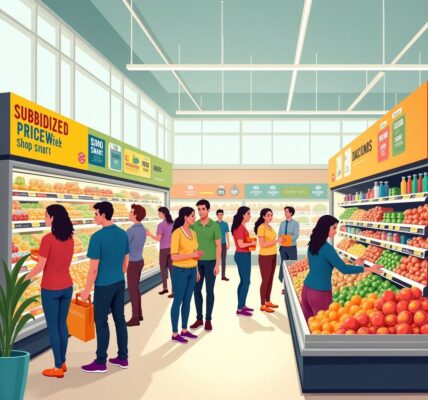Inflation rates are exhibiting a steady, though slightly elevated trend according to the latest data from the U.S. Bureau of Labor Statistics (BLS). The report reveals that the overall Consumer Price Index (CPI) increased by a modest 0.2% in September, maintaining the same pace observed in both August and July. Notably, food-at-home prices saw a slightly more pronounced rise of 0.4% during the same period, a development that is expected to keep grocery inflation at the forefront of political discussions, particularly in anticipation of the upcoming elections on November 5.
Andy Harig, Vice President of Tax, Trade, Sustainability and Policy Development at FMI – The Food Industry Association, indicates that the latest figures highlight ongoing challenges in price stabilization. He remarked, “The latest CPI numbers demonstrate that taming inflation continues to be an uneven process.” Harig notes that food prices are influenced by a multitude of factors and can often be volatile, emphasizing the significance of September’s increase in food-at-home CPI.
From a broader perspective, the year-over-year data also appears encouraging, with food-at-home inflation registering at 1.3%, signaling substantial progress in controlling grocery prices. This jump, while minor on a month-to-month basis, represents a considerable improvement in the overall inflation landscape when assessed on an annual scale.
Analyzing the details from the fresh BLS release, it becomes evident that five of the six major grocery indices recorded price increases last month. In particular, the CPI for meats, poultry, fish, and eggs experienced a notable uptick of 0.8%, largely due to a spike of 8.4% in egg prices. Similarly, the index for fruits and vegetables rose by 0.9%, while cereals and bakery products saw a marginal rise of 0.3%. Dairy products edged up 0.1%, and other food-at-home products increased by 0.2%. Interestingly, inflation in the nonalcoholic beverage sector remained static.
What stands out is the comparison between grocery costs and food service pricing; during this same time frame, the grocery CPI exceeded the foodservice index, which reported a 0.4% increase in food-away-from-home prices. This trend indicates a shifting dynamic in consumer spending habits – as people evaluate the costs associated with dining out versus grocery shopping.
Additionally, for grocers operating fuel stations, a welcome surprise emerged from the drop in gas prices, which declined by 4.1% as the summer vacation season came to an end. Such fluctuations in transportation costs have implications not only for retailers but also for consumers, particularly in how they budget and prioritize their spending.
Looking ahead, Harig strikes a cautiously optimistic tone as the grocery sector gears up for the bustling sales periods from Halloween through New Year’s. He voiced hopes that “the worst of food price inflation is behind us,” suggesting that consumers may benefit from a more stable pricing environment during this critical retail season. However, he also acknowledges the need for vigilance due to the potential impact of natural disasters, specifically mentioning Hurricanes Helene and Milton. The food supply chain’s resilience has been tested in recent years, and the lessons learned during the COVID-19 pandemic have enhanced safety measures within the system.
To further illustrate the consumer sentiment around grocery inflation, many shoppers are prioritizing value and convenience, seeking options that do not compromise their budgets. Private label products are gaining traction as consumers explore alternatives to national brands, indicating a shift in shopping behavior that could have lasting effects on the retail landscape.
In conclusion, while grocery inflation remains a persisting concern, particularly as we approach significant shopping seasons, recent data presents a mixed but relatively hopeful outlook. Grocers and policymakers must continue to monitor these trends while actively seeking solutions to mitigate the impacts of inflation on consumers. The combination of resilience, market adaptability, and consumer awareness will ultimately shape the grocery narrative in the months to come.











